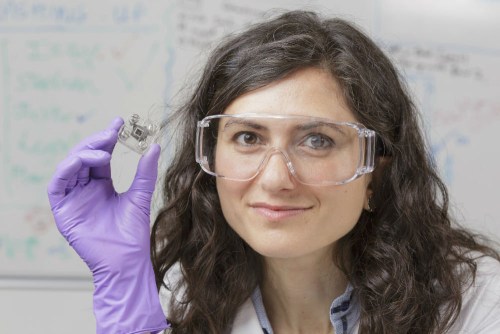
Climate change and depleting resources have made the search for sustainable sources of energy a top priority. Wind, solar, and hydrogen power offer valuable alternatives for those of us who can afford them. But the technology needed to harness these energies can be too complex and expensive for people living in remote and low socioeconomic areas.
Rather than rely on a source from outside the body, researchers from the University of Bath have turned towards an “indigenous” resource – urine.
To extract energy from excrement, the team developed small, microbial fuel cells that exploit the biological process of bacteria to generate electricity from organic matter. The researchers claim their design is cheaper and more powerful than similar devices. Measuring just one square inch, these fuel cells are made with a carbon catalyst created from glucose and ovalbumin (a protein found in egg whites) rather than platinum, which is often used in microbial fuel cells. Glucose and ovalbumin are renewable and significantly cheaper than the platinum alternative.
The current design is capable of producing 2 Watts per cubic meter from a single fuel cell. That’s just enough energy to power a mobile phone. Though hydrogen, solar, and wind can generate much more energy, this new method can generate energy at a fraction of the cost. According to the researchers, each fuel cell may cost only £1-£2 ($1.50-$3).
Dr. Mirella Di Lorenzo of the University of Bath’s Department of Chemical Engineering co-authored the research paper, published in Electrochimica Acta. She notes the “energy trilemma” of finding a sustainable power source that is both “secure, affordable, and environmentally sensitive…” She says, “There is no single solution to this ‘energy trilemma’ apart from taking full advantage of indigenous resources, which include urine.”
“Pee power” is particularly promising for energy poor people in developing countries where wind, solar, and hydrogen energy can be prohibitively expensive. As an added benefit, microbial fuel cells can help eliminate waste while producing little waste of their own.
Editors' Recommendations
- World’s most powerful tidal turbine begins generating electricity
- Hyundai cracks off two new land speed records in fuel cell, hybrid cars
- BMW teases hydrogen cars again with fuel cell X5 concept
- BMW may finally be ready to sell hydrogen fuel cell cars to the public
- The Skai is a multipurpose flying car powered by hydrogen fuel cells